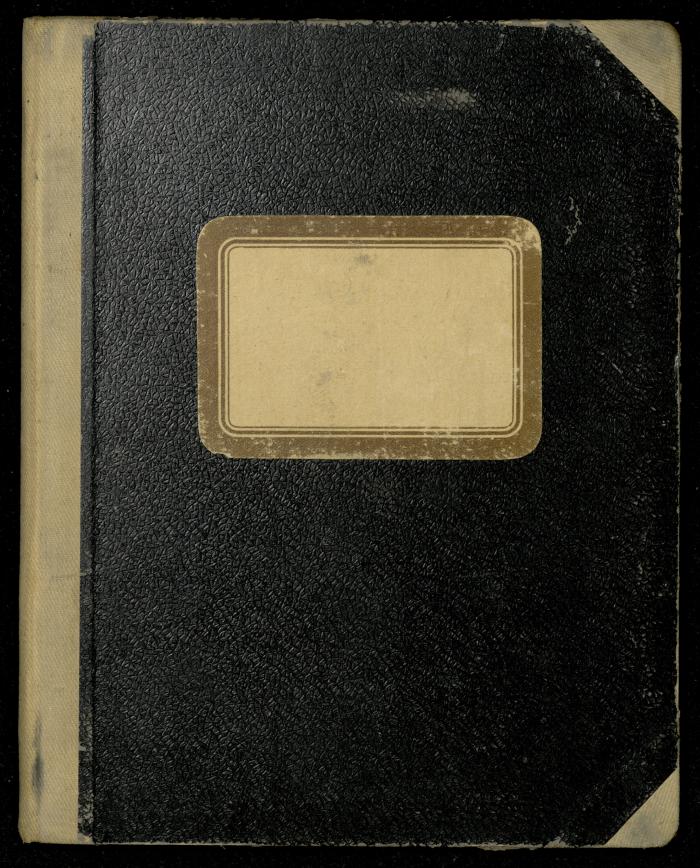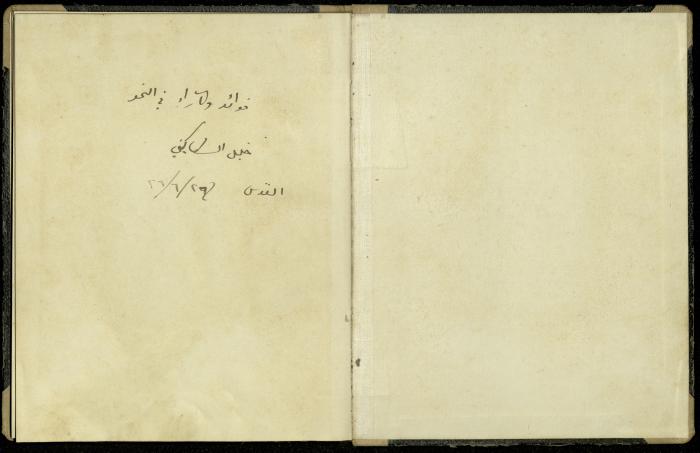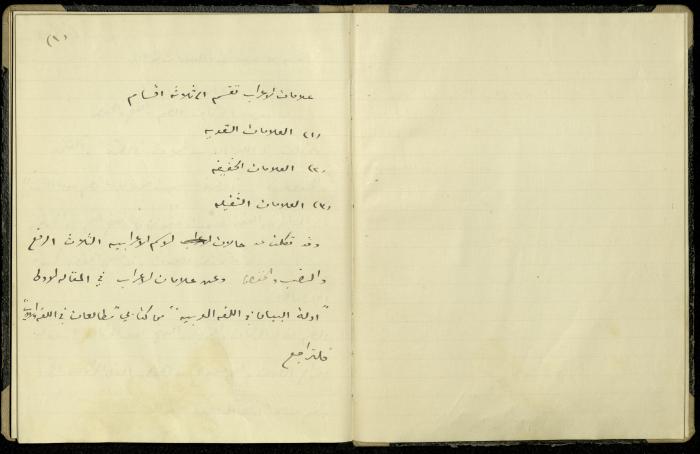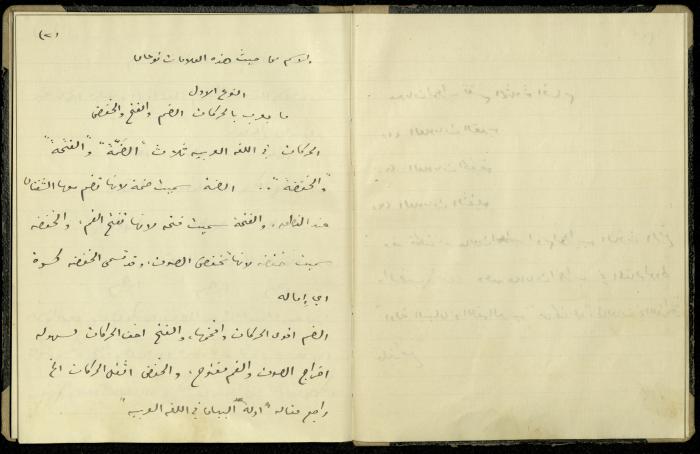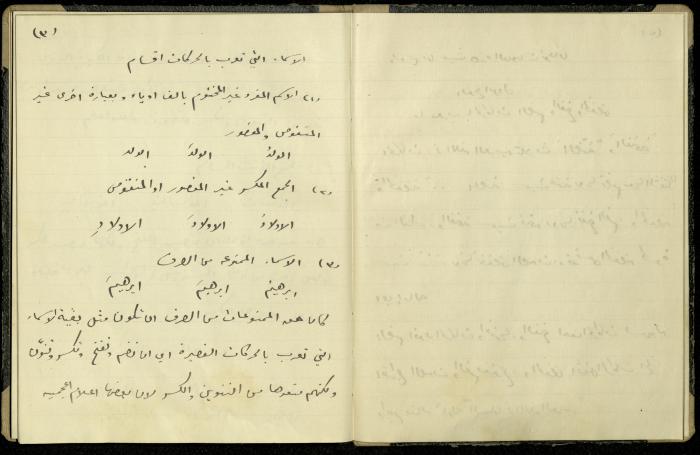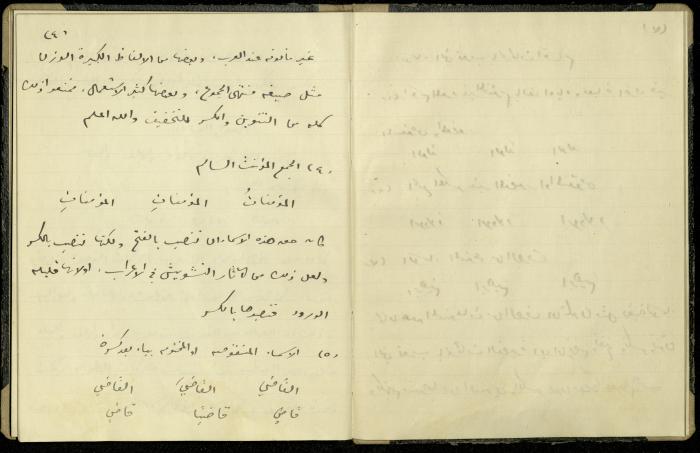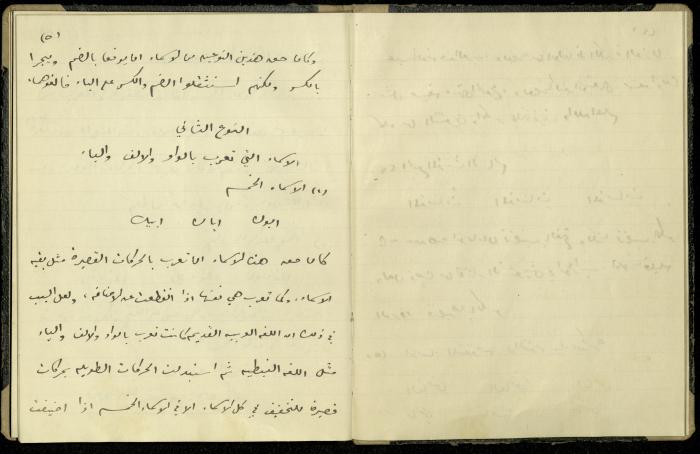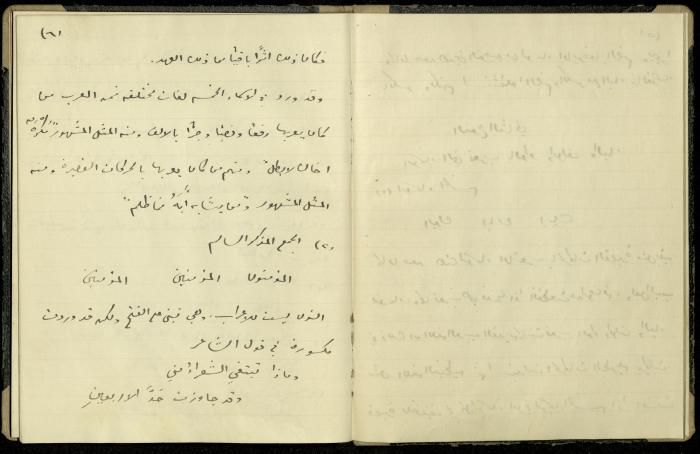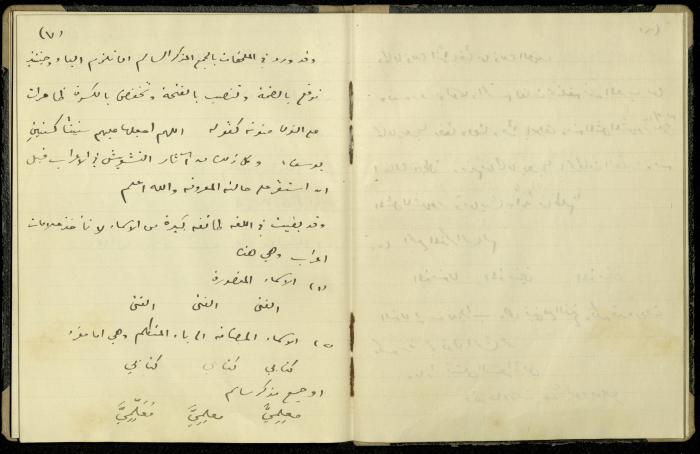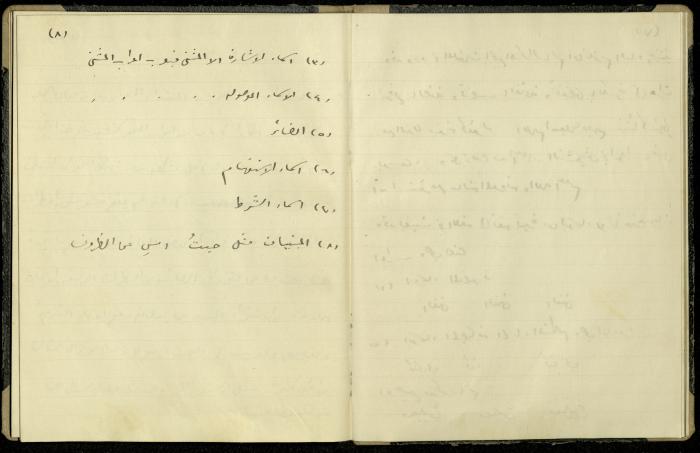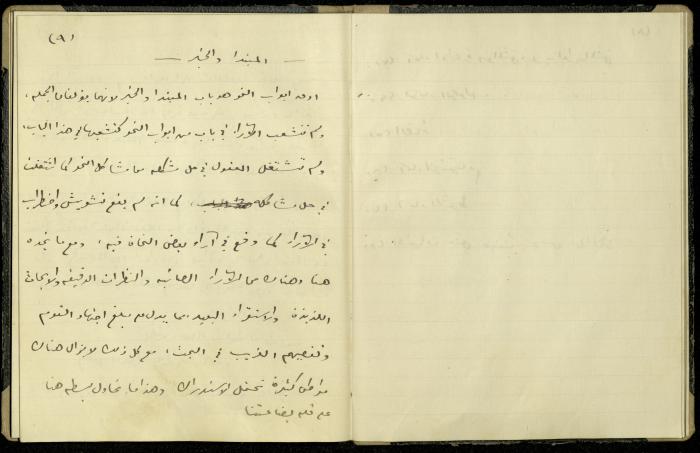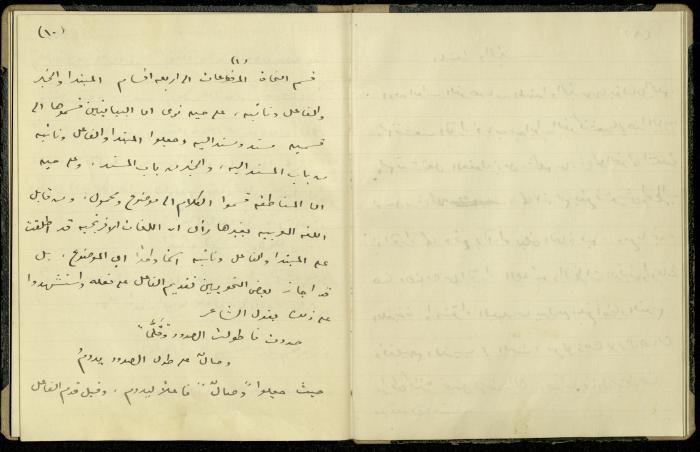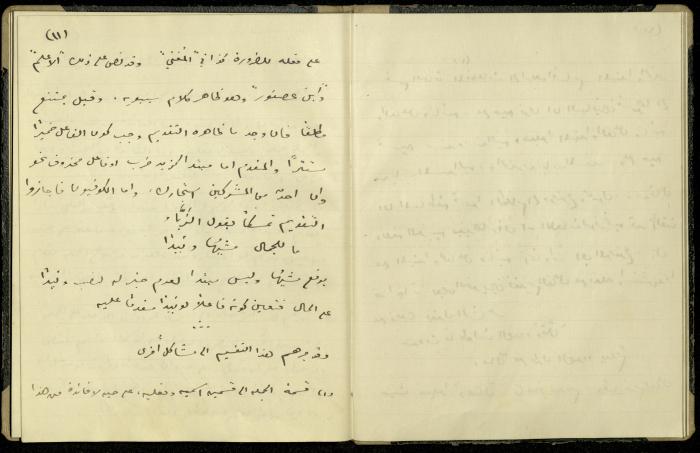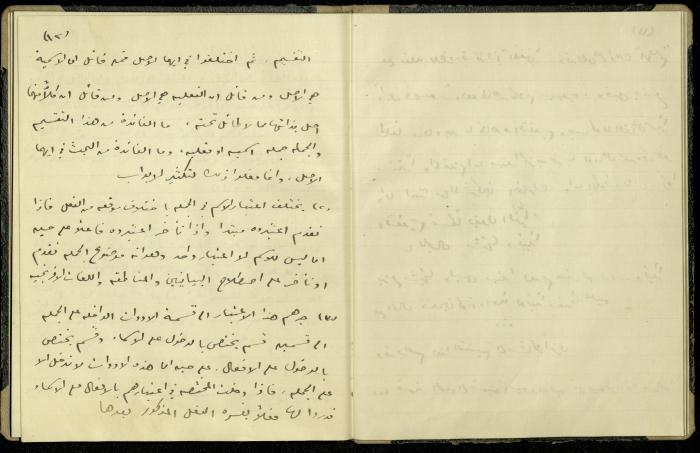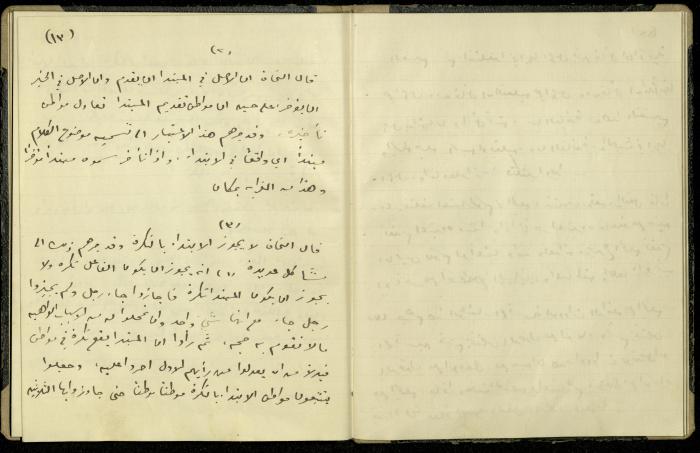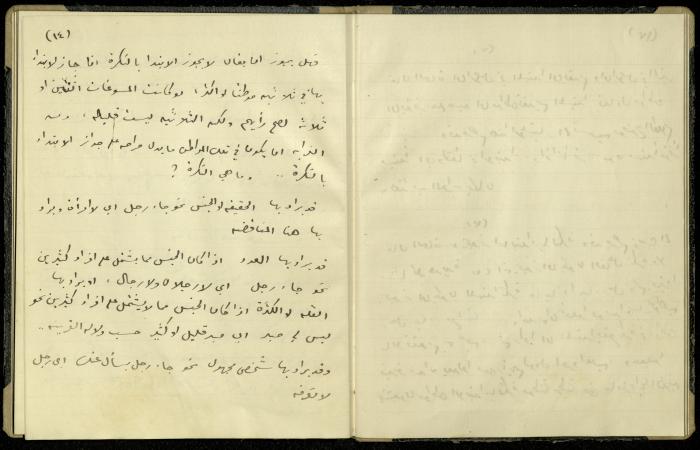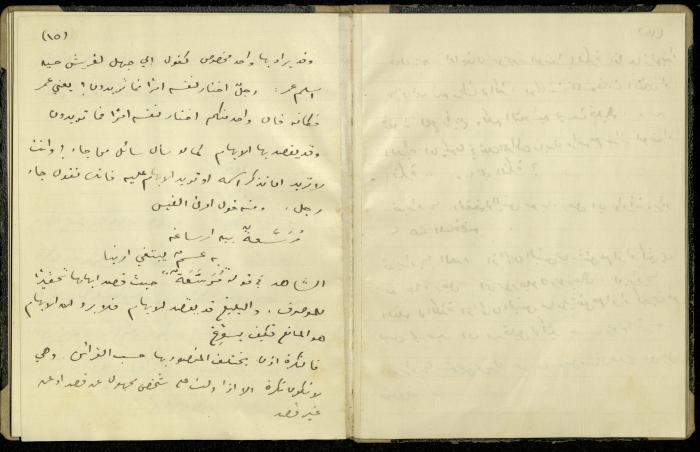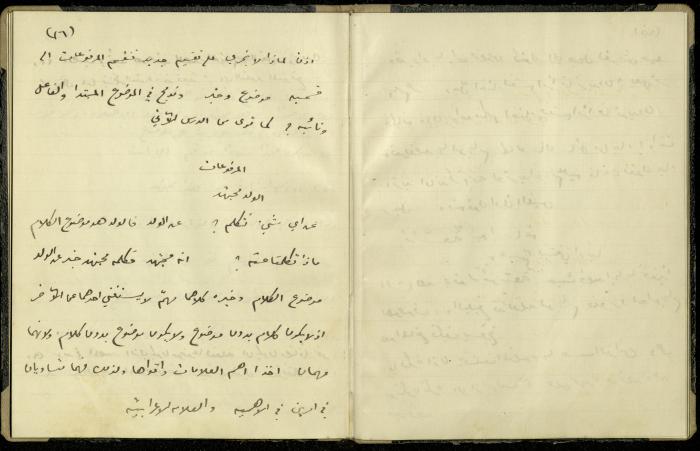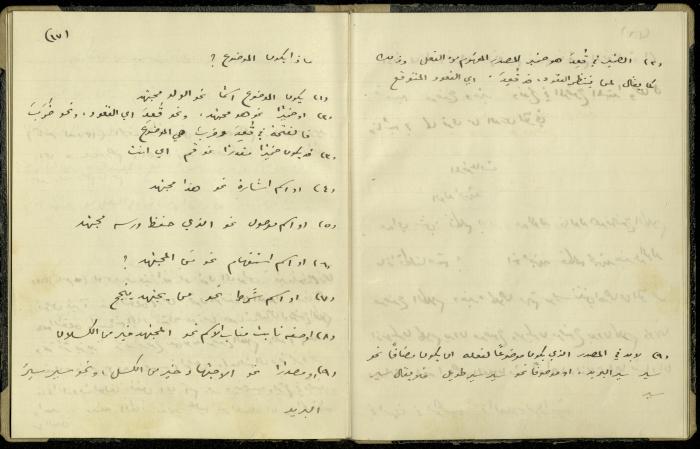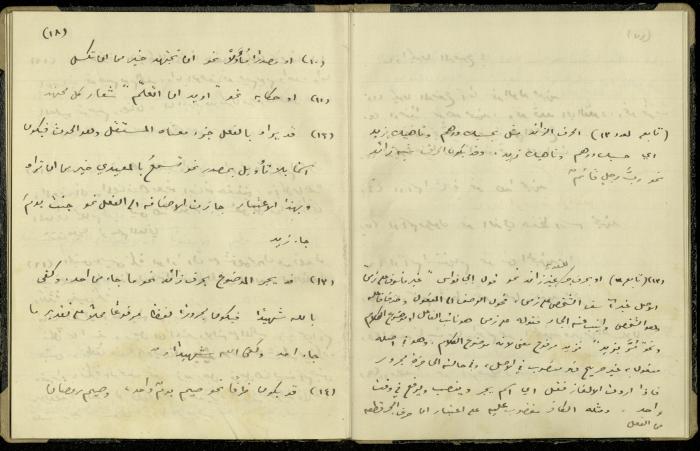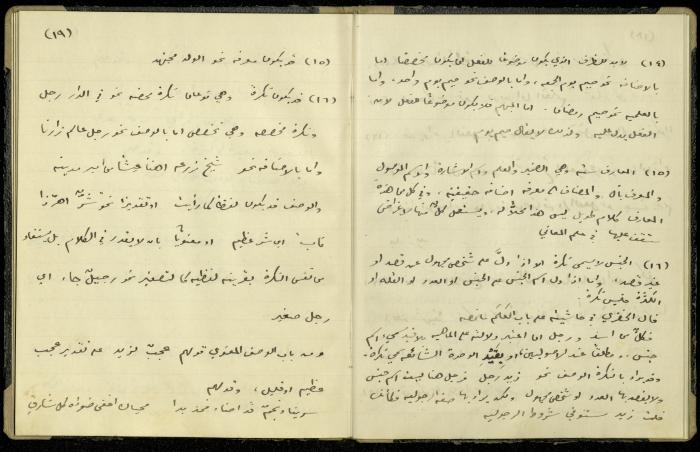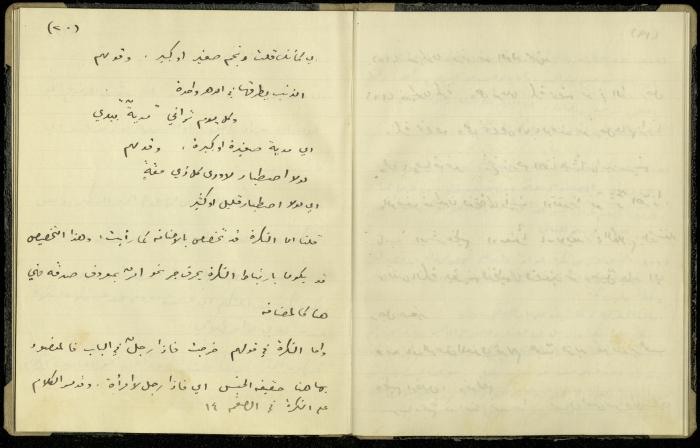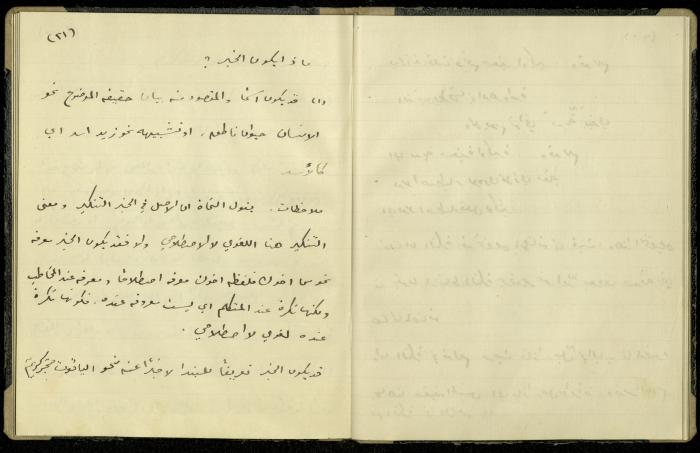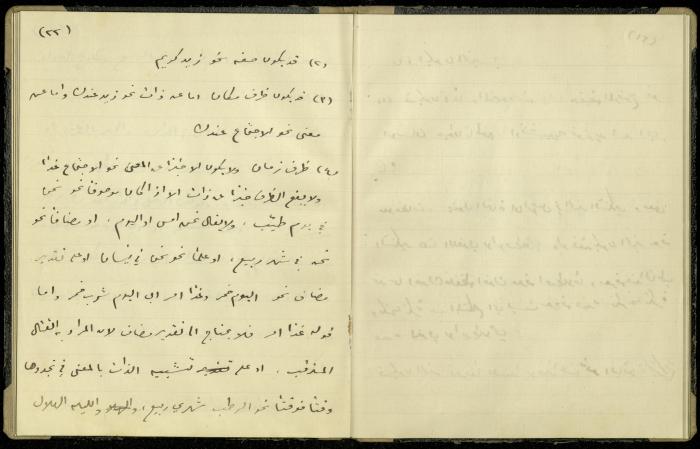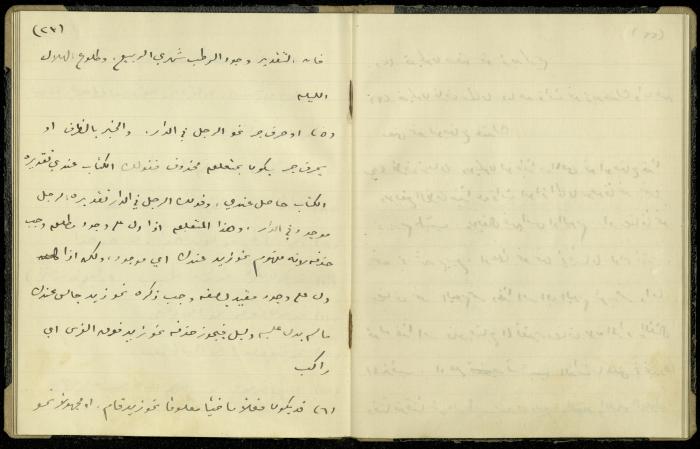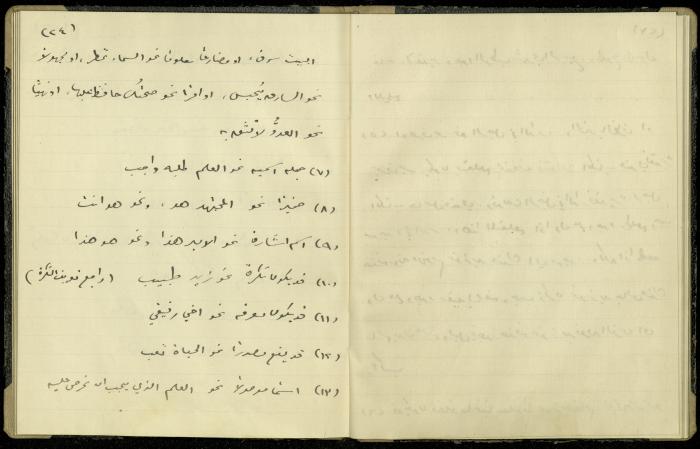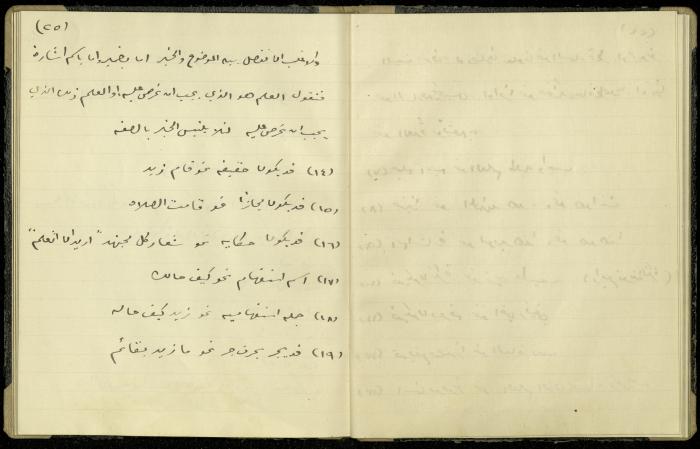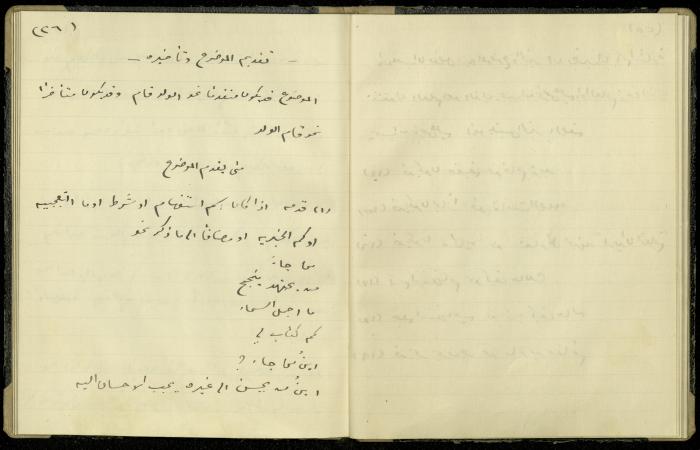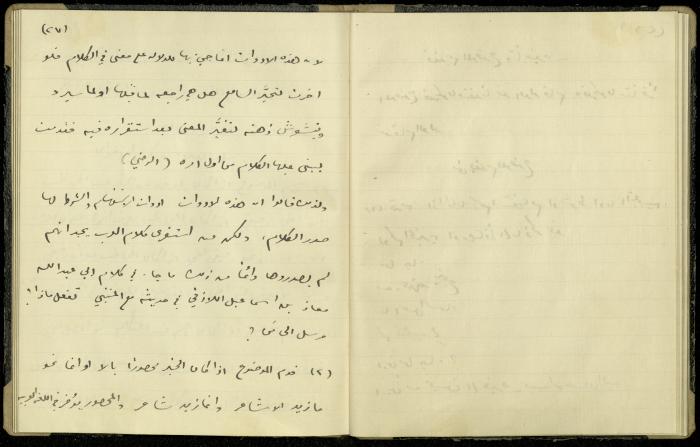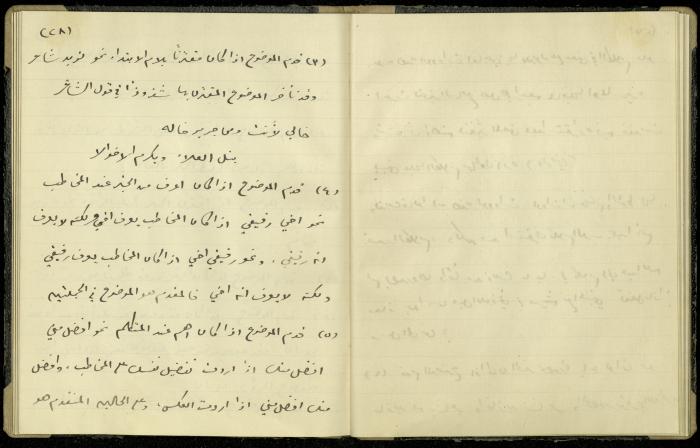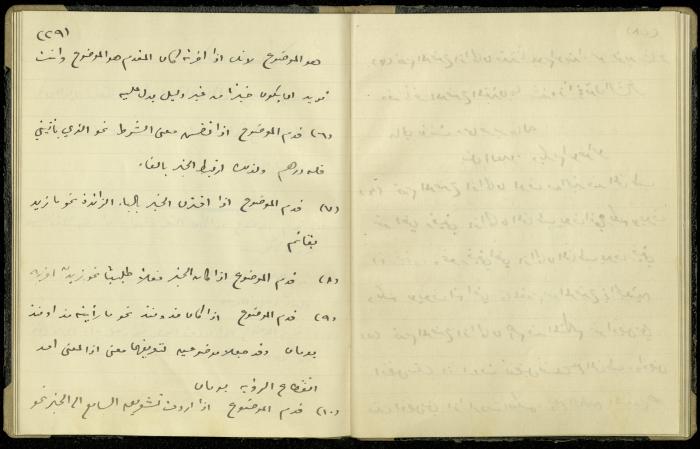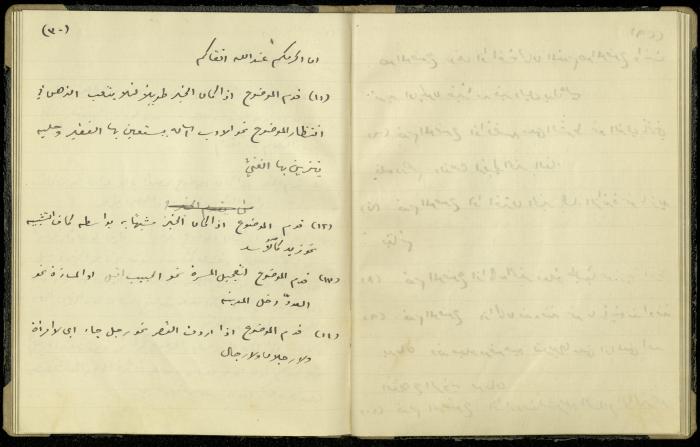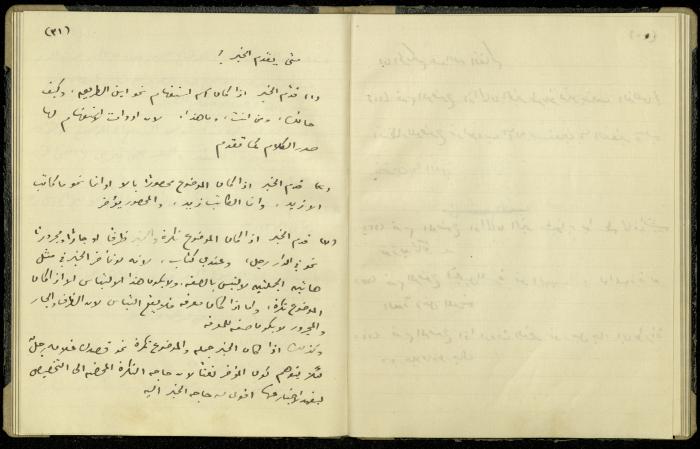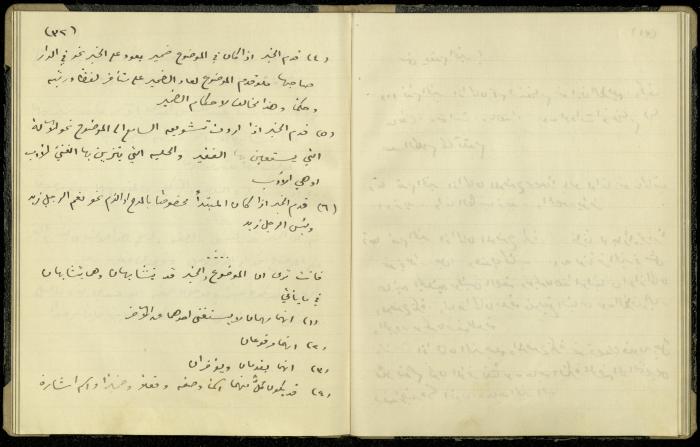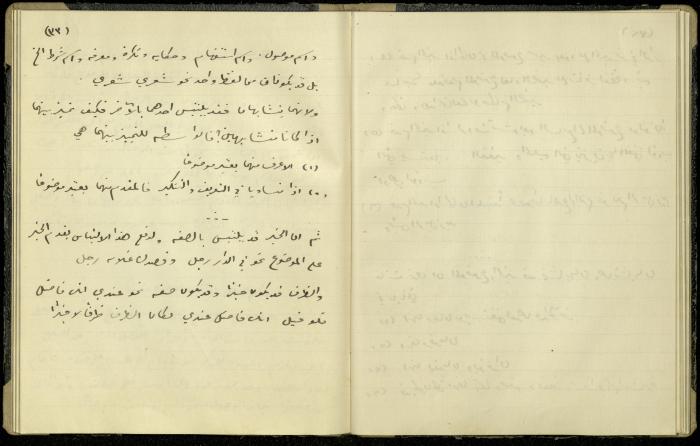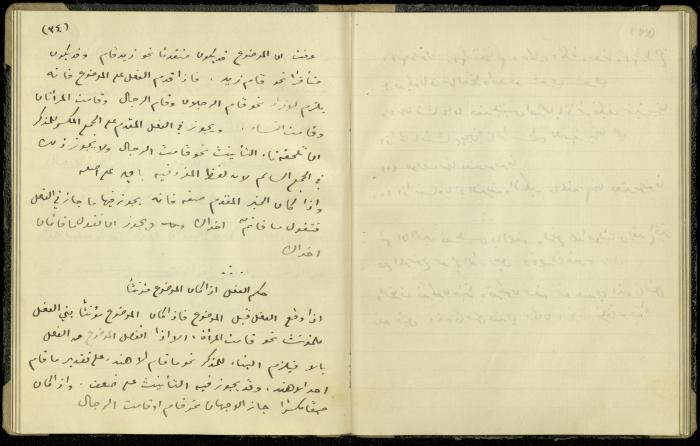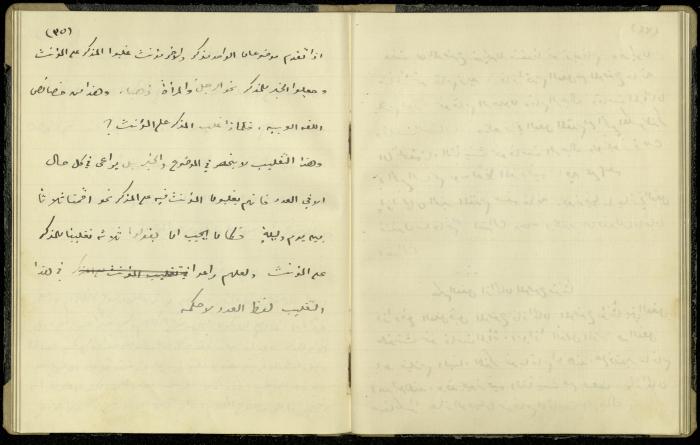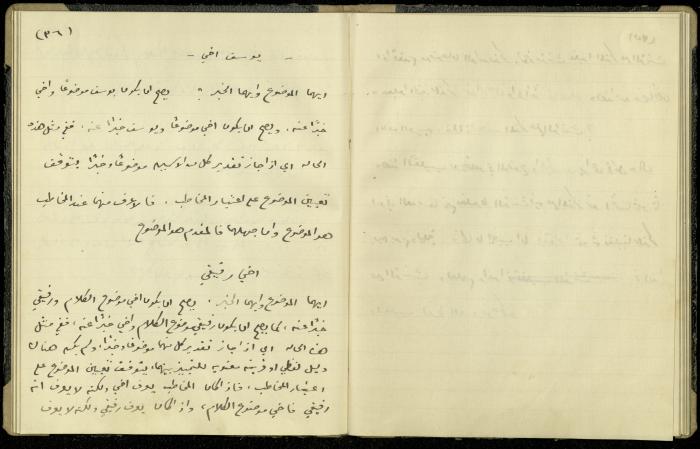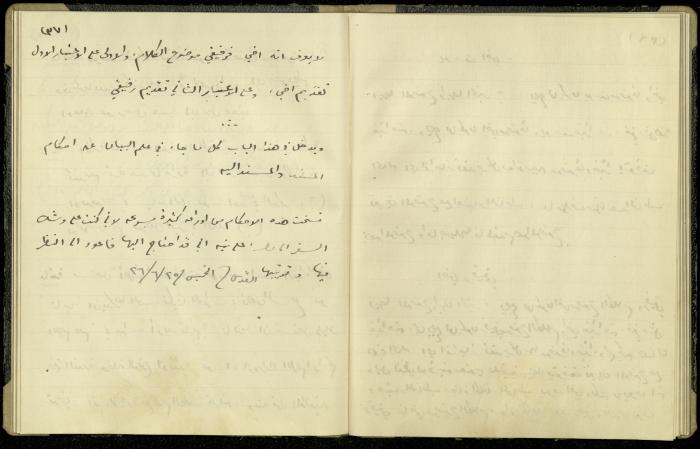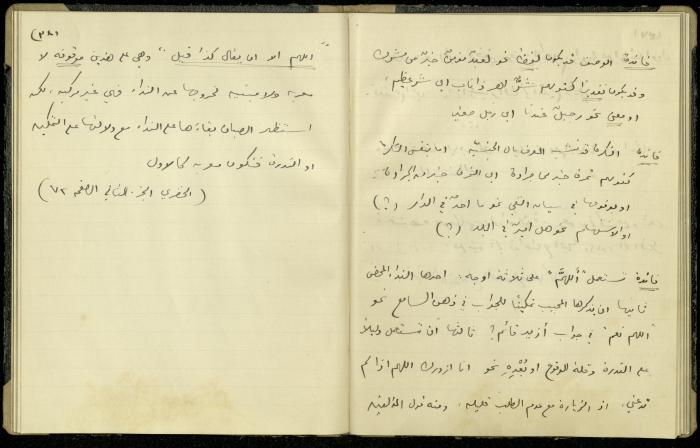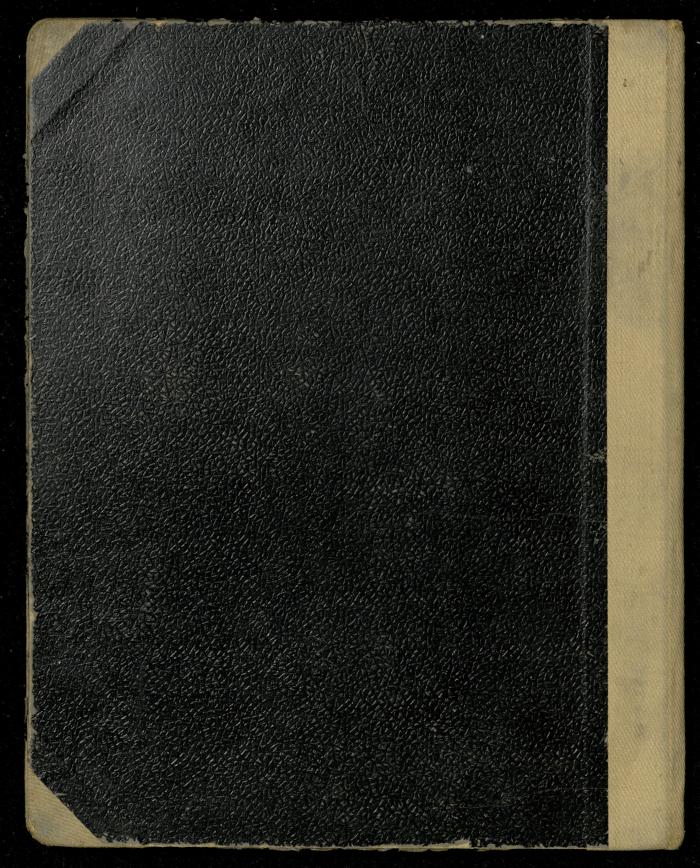"Fawaed Wa Araa Fi an-Nahw", by Khalil Sakakini, 29 June 1926
Titled “Fawaed Wa Araa Fi an-Nahw”, this is the written version of Khalil Sakakini’s book, which discussed different subjects such as I’rab signs and divisions, the 3 noun I’rab states: Raf’, Nasb and Khafd, then he mentions the subject and predicate, which is the most delicate door of grammar as sentences are not built without it, then he talks of the four Marfouat: the subject and its predicate, and the verb and its sub-verb. Purists divided them into two parts al-Musnad (includes the predicate) ad al-Musnad Elayh (including al-Mubtada, the verb and the sub-verb). Spelling was divided into installed and carried, where some stated that it was fine to put the subject ahead of the verb if necessary, while some prohibited that entirely, which led to the division of the sentence into noun and verb sentences, which in Sakakini’s opinion, a useless division and all this conversation regarding the origin is unneeded. Sakakini mentions that the noun in the sentence is considered the subject, as it has no meaning for being considered Mubtada if the verb comes first and a subject of it doesn’t, which led to the division of tools entering the sentence into two sections, one that specializes in entering to the nouns and one entering to the verbs. What intrigues Sakakini is grammarians consider that the origin of the Mubtada to come first and that the predicate comes second, if the Mubtadaa is held back, it is called a late Mubtada. Sakakini also mentions the grammarians’ opinion regarding prohibiting beginning the sentence with an indefinite noun has led them to several issues including allowing the verb to be indefinite and not allowing the Mubtadaa to be indefinite. Besides, what is an indefinite noun? Sakakini answers that it’s either truth, gender, number or an unknown. Due to the importance of the speech object and predicate, and that both rely on each other, they took the most important and strongest signs, as they are equal in importance and I’rab signs. The object is either a noun, pronoun, demonstrative, relative pronoun, interrogative noun, conditional sentence, an adjective replacing a noun, source, reverted source, thread or adverb. It could also be known or an indefinite noun, which includes two types, the general and specific, and it is specified with description or addition. A predicate could be a noun, a definition for a Mubtada that has no predicate, adjective, adverb, preposition, known past tense, noun sentence, pronoun or demonstrative, it can also be an indefinite noun, known, source or relative pronoun, as well as a thread, question noun or question sentence, and it could have a preposition. The subject proceeds its predicate if it was a question noun, a conditional sentence, exclamatory “Ma”, predicative “Kam” or the subject was genitive to the previously mentioned articles. The subject proceeds if the predicate is constructed by “Ella” or “Ennama”, as well as being proceeded by “Lam” of the Mubtada’, or if the subject is of more significance than the predicate. Another case in which it precedes if its predicate was connected with an added “Ba”, the predicate was a commanding verb, the predicate was lengthy and if the predicate was metaphorical. The predicate proceeds if it was a question, its subject by “Ella” or “Ennama”, the subject was an indefinite noun and the predicate was an adverb or preposition phrases if within the subject a pronoun belonging to the predicate or it was interesting for the listener. The subject and predicate are similar in importance, Raf’, proceeding and delaying, they are also both a noun, adjective, verb, pronoun, demonstrative, relative pronoun, thread, indefinite noun, definite noun and conditional. Sakakini mentions that if the subject is feminine, the verb must be as well, and the masculine proceeds the feminine in the subject. Sakakini ended his book by mentioning 3 benefits including the description could be by expression or implication, the indefinite noun could be similar to the definite by adding “Al” of the gender and “Allahuma” is used in three ways: pure calling, enabling the answer and pointing out rarity, unlikeliness or after.
Date created
COLLECTIONS
Tags
Topics
TYPE
LOCATION
More details
Format
Source of Description
عبدات، لجين وسمرعزريل. "مركز خليل السكاكيني الثقافي". جرد أرشيفي. 25 آب 2020. أرشيف المتحف الفلسطيني الرقمي.
Physical status
medium
Help us refine the information, suggest a change in the content of this item
Suggest a Change
